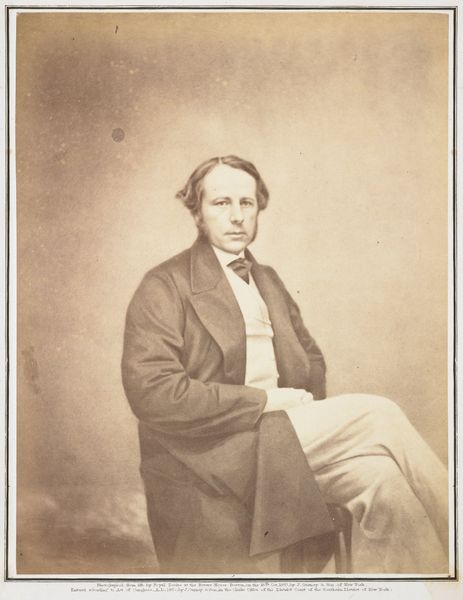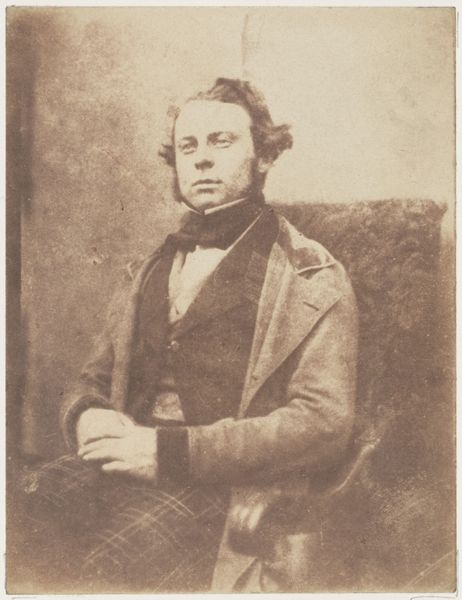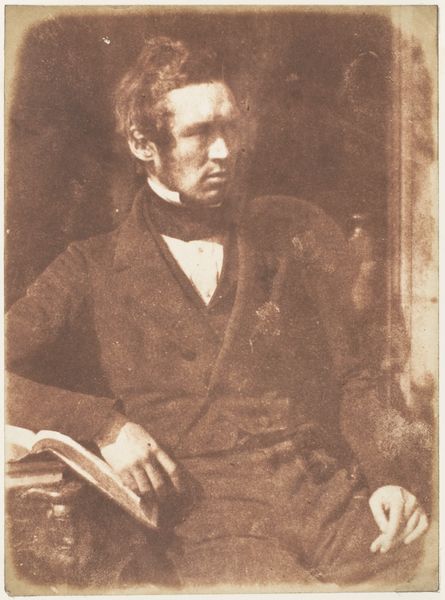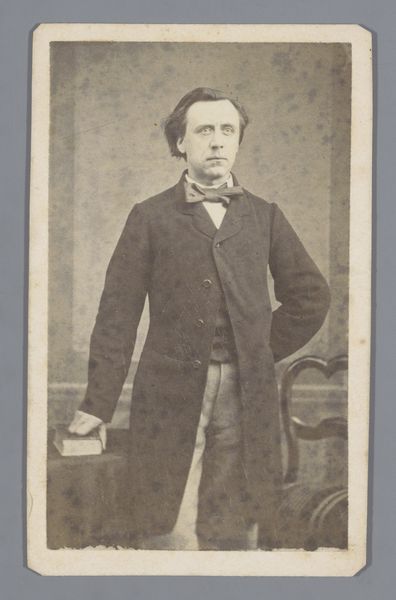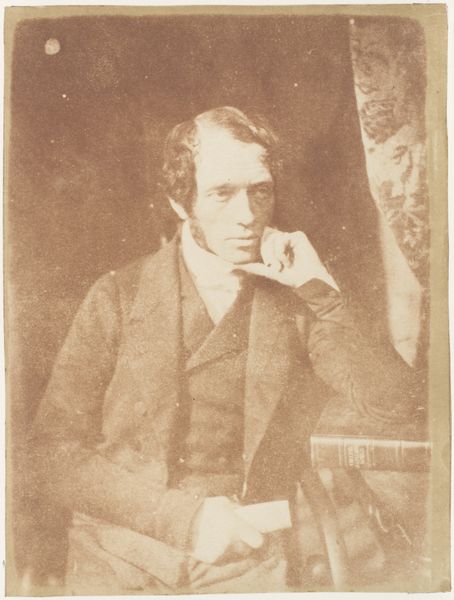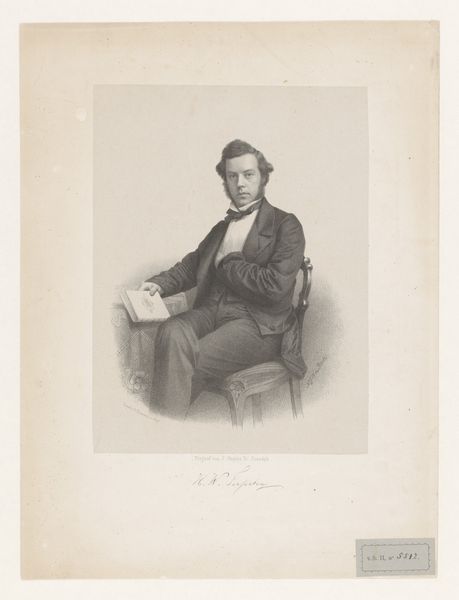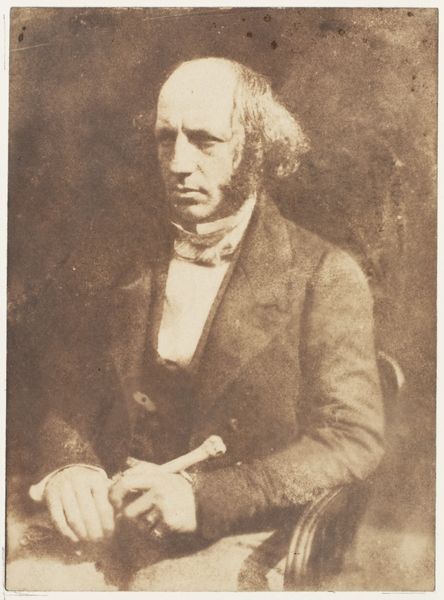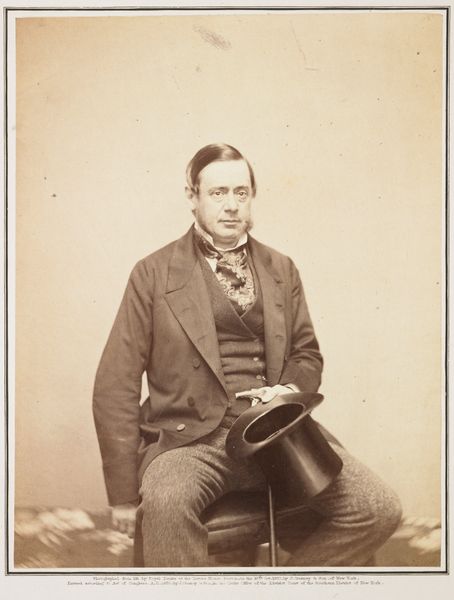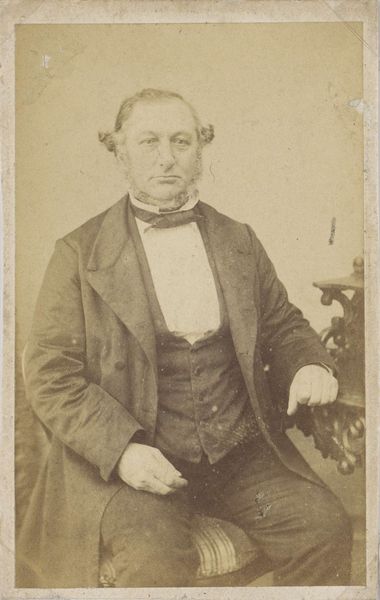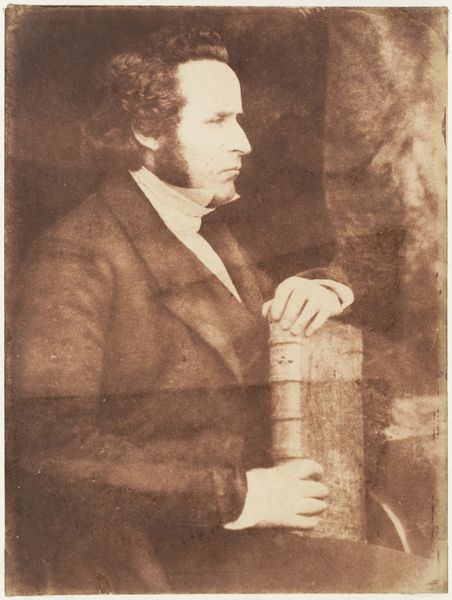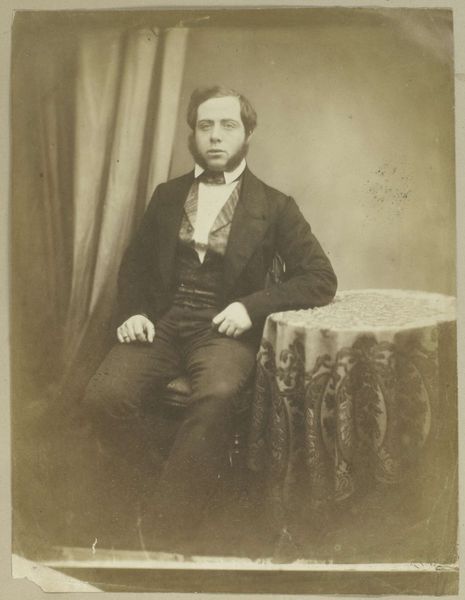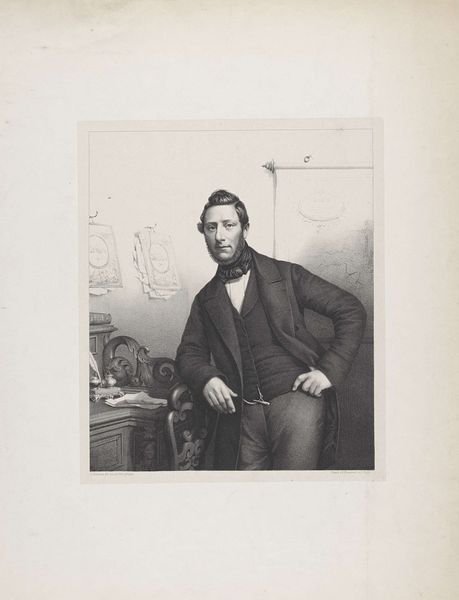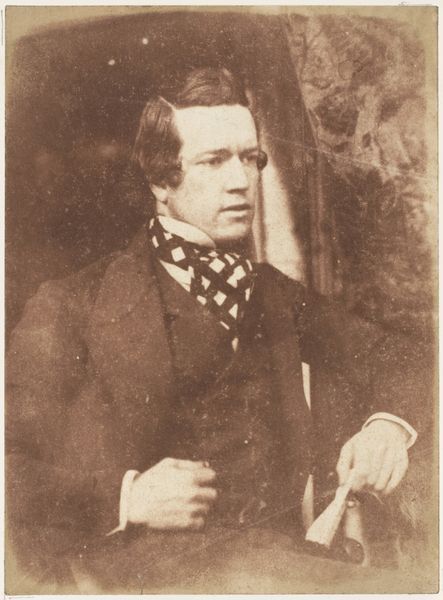![[Man, Full-length] by Hill and Adamson](/_next/image?url=https%3A%2F%2Fd2w8kbdekdi1gv.cloudfront.net%2FeyJidWNrZXQiOiAiYXJ0ZXJhLWltYWdlcy1idWNrZXQiLCAia2V5IjogImFydHdvcmtzLzEyZWNkZTM5LTQ3MDItNDI3Yy05YjcwLWU5YzhlYzIzNzIyYy8xMmVjZGUzOS00NzAyLTQyN2MtOWI3MC1lOWM4ZWMyMzcyMmNfZnVsbC5qcGciLCAiZWRpdHMiOiB7InJlc2l6ZSI6IHsid2lkdGgiOiAxOTIwLCAiaGVpZ2h0IjogMTkyMCwgImZpdCI6ICJpbnNpZGUifX19&w=3840&q=75)
daguerreotype, photography
#
portrait
#
daguerreotype
#
figuration
#
photography
#
historical photography
#
romanticism
#
portrait photography
Copyright: Public Domain
Curator: Here we have “[Man, Full-length],” a daguerreotype created between 1843 and 1847 by the pioneering Scottish photography duo, Hill and Adamson. It's currently held at the Metropolitan Museum of Art. Editor: There's such a pensive air about him. The sepia tones really lend a sense of distance, like looking through a softened memory. I imagine the daguerreotype was quite small, and yet his presence still feels grand. Curator: Indeed, Hill and Adamson were masters of imbuing their sitters with a quiet dignity. This work is particularly interesting when we consider the context of early photography. It democratized portraiture to a degree, although access was still limited. But think about the shift in representation. Editor: It absolutely challenges traditional portraiture, especially when considering notions of power and who is memorialized. There’s a striking simplicity to the subject's attire – not overly adorned, suggesting a middle-class identity perhaps, caught in the burgeoning wave of industrial capitalism. I'm immediately drawn to how his hand clutches the hat, almost a visual signifier of his profession or societal role, a tension between identity and obligation. Curator: And notice the direct gaze. There’s a sense of self-awareness that transcends mere documentation. Hill and Adamson were deeply involved in social reform movements in Scotland; it's crucial to read their portraits alongside the broader debates surrounding class, representation, and agency in the Victorian era. These images become powerful social documents. Editor: Absolutely. Thinking about photography at this moment, as both a technological advancement and an artistic medium, is fascinating. It was revolutionary in giving new platforms to individuals. Yet, it can also be seen as reinforcing social hierarchies; we must recognize who gets to control the lens and whose image is perpetuated. Curator: Precisely. Reflecting on “Man, Full-length,” it acts as a window into the past, a quiet commentary on personhood within a society on the cusp of massive transformation. Editor: Yes, it’s a photograph that continues to echo, forcing us to confront our own perspectives on who is remembered and why.
Comments
No comments
Be the first to comment and join the conversation on the ultimate creative platform.
